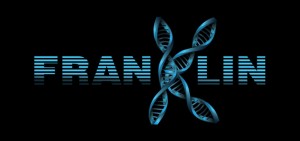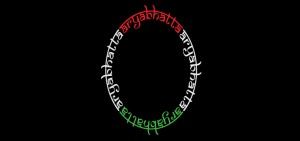A May 12, 2021 news item on ScienceDaily brings news of a technology that makes reading easier,
AdaptiFont has recently been presented at CHI, the leading Conference on Human Factors in Computing.
Language is without doubt the most pervasive medium for exchanging knowledge between humans. However, spoken language or abstract text need to be made visible in order to be read, be it in print or on screen.
How does the way a text looks affect its readability, that is, how it is being read, processed, and understood? A team at TU Darmstadt’s Centre for Cognitive Science investigated this question at the intersection of perceptual science, cognitive science, and linguistics. Electronic text is even more complex. Texts are read on different devices under different external conditions. And although any digital text is formatted initially, users might resize it on screen, change brightness and contrast of the display, or even select a different font when reading text on the web.
A May 12, 2021 Technische Universitat Darmstadt (Technical University of Damstadt; Germany) press release (also on EurekAlert) provides more detail,
The team of researchers from TU Darmstadt now developed a system that leaves font design to the user’s visual system. First, they needed to come up with a way of synthesizing new fonts. This was achieved by using a machine learning algorithm, which learned the structure of fonts analysing 25 popular and classic typefaces. The system is capable of creating an infinite number of new fonts that are any intermediate form of others – for example, visually halfway between Helvetica and Times New Roman.
Since some fonts may make it more difficult to read the text, they may slow the reader down. Other fonts may help the user read more fluently. Measuring reading speed, a second algorithm can now generate more typefaces that increase the reading speed.
In a laboratory experiment, in which users read texts over one hour, the research team showed that their algorithm indeed generates new fonts that increase individual user’s reading speed. Interestingly all readers had their own personalized font that made reading especially easy for them. However: This individual favorite typeface does not necessarily fit in all situations. “AdaptiFont therefore can be understood as a system which creates fonts for an individual dynamically and continuously while reading, which maximizes the reading speed at the time of use. This may depend on the content of the text, whether you are tired, or perhaps are using different display devices,” explains Professor Constantin A. Rothkopf, Centre for Cognitive Science und head of the institute of Psychology of Information Processing at TU Darmstadt.
The AdaptiFont system was recently presented to the scientific community at the Conference on Human Factors in Computing Systems (CHI). A patent application has been filed. Future possible applications are with all electronic devices on which text is read.
There’s a 5 minute video featuring the work and narration for a researcher who speaks very quickly,
Here’s a link to and a citation for the paper,
AdaptiFont: Increasing Individuals’ Reading Sp0eed with a Generative Font Model and Bayesian Optimization by Florian Kadner, Yannik Keller, Constantin Rothkopf. CHI ’21: Proceedings of the 2021 CHI Conference on Human Factors in Computing Systems May 2021 Article No.: 585 Pages 1-11 DOI: https://doi.org/10.1145/3411764.3445140 Published: 06 May 2021
This paper is open access.
Artificial intelligence is not mentioned but it’s hard to believe that adaptive learning by the software is anything other than a form of AI.





